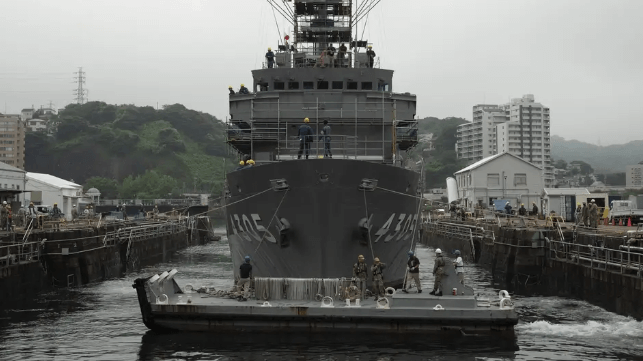Report: U.S. Navy Might Use Japanese Repair Yards for U.S. Warships

Rahm Emanuel, former chief of staff to Barack Obama and former mayor of Chicago, has a reputation as a hard-nosed politician with little fear of hard fights. As President Joe Biden's ambassador to Japan, he has marketed the controversial Alaska LNG plant to Japanese power utilities, bucking his own party's long-term views on fossil fuel. Now, according to Nikkei Asia, he may be leading a plan to send U.S. Navy warships to private Japanese repair yards. This would tap a badly-needed new resource to resolve chronic backlogs, improving Navy readiness for a high-end fight - but it would end the near-exclusive bidding rights of American repair yards, which have a political reputation of their own.
The concept is not entirely new. U.S. warships based in 7th Fleet already use the Navy's own repair yard in Yokosuka, and Japanese contractors and civilian employees assist at that location. However, the new plan would be a dramatic expansion of the status quo: it would connect passing U.S. warships from outside 7th Fleet with Japanese-owned private ship repair companies.
According to Nikkei reporter Ken Moriyasu, Emanuel is leading the effort, promoting the idea to members of Congress and tapping the Tokyo embassy's staff to explore naval ship repair options with the Japanese government. "This is one of [the U.S. ambassador's] major initiatives. If the US Navy can tap shipyards in Japan, South Korea, Singapore and the Philippines, this would help ease US bottlenecks," Moriyasu wrote.
In a serious development for American shipbuilding, the plan also contemplates the construction of naval auxiliary newbuilds in the yards of Asian allies like Japan and South Korea, both of which have sophisticated and capable shipbuilding industries.
This would be a controversial development, since newbuild U.S. Navy auxiliaries are exclusively constructed in American yards. Again, the approach would not be entirely new. For decades, the U.S. Maritime Administration has purchased foreign-built ships to increase U.S.-flagged military sealift capacity, citing the accessible price and immediate availability of used foreign tonnage.
The Navy faces similar cost and availability challenges as MARAD, and it is well aware of the workforce and supply chain issues in the American industrial base. It has a persistent backlog in its ship repair docket, which stands at about $1.8 billion worth of incomplete work, according to the GAO. If this is a challenge today, it may get tougher soon. When aging Navy repair facilities temporarily shut down for maintenance, other yards will have to be found - and overseas yards in Korea and Japan may make the most sense, argued Lt. Jeong Soo Kim (USN) in a recent article in USNI Proceedings.
